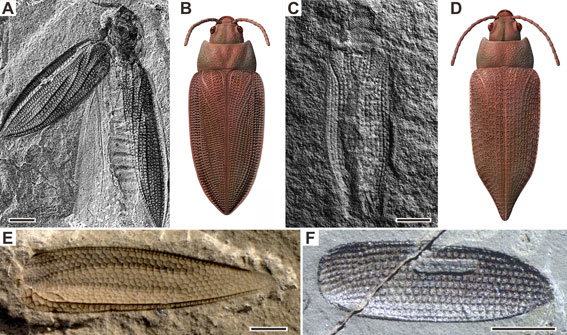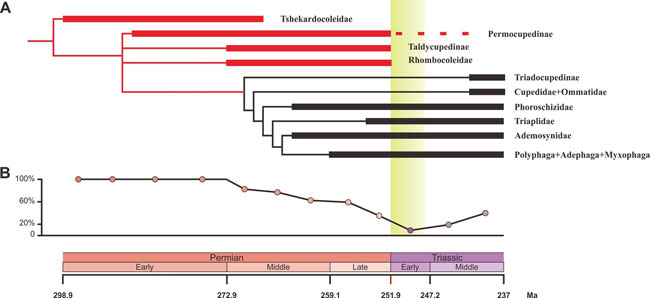Permian Beetles Provide Pointers to Remarkable Ecosystem Collapse
The COP26 conference continues to dominate the news. Countries are striving to find the commitments required to limit global warming to 1.5 degrees Celsius to mitigate the worst effects of global warming. Could the humble beetle provide a clue as to the consequences if the world’s leaders can’t find agreement?
A new study published in eLife this week, looked at beetle fossils, specifically those wood-eating (xylophagous) beetles, it seems the mass extinction event that took place around 252 million years ago devastated these insects. If the huge and diverse Coleoptera are not invulnerable to global climate change, then what chance does the last line of hominins have in the current climate crisis?

The Mass Extinction Event at the End of the Permian
The end-Permian mass extinction event, led to the collapse of global marine and terrestrial ecosystems. It has been estimated that around 95 percent of all life on Earth died out. The ecological response of insects (Insecta), to this catastrophe is poorly understand. A team of scientists have reviewed the fossil record of wood-eating beetles associated with the Permian and Triassic and they have concluded that the collapse of forest ecosystems led to a dramatic decline in these beetles. Furthermore, xylophagous beetles may have been responsible for the decrease of oxygen concentrations in the Permian.
Dominated by Xylophagous Beetles
The fossil record may show some bias towards wood-eating beetles when compared to the preserved remains of other types of beetle with different diets, but in this new study the research team, which included scientists from Nanjing Institute of Geology and Palaeontology and Centre for Excellence in Life and Palaeoenvironment, the University of California and the London Natural History Museum, discovered that xylophagous beetles dominated the Coleoptera during the Early Permian.
Studying Permian Beetles
As different types of beetle evolved, their dominance declined until the end-Permian mass extinction event when the number of species collapsed. The lack of coal seams dating from around 252-247 million years ago, are a testament to the loss of forest habitats. New xylophagous beetles appeared widely in the early Middle Triassic, which is consistent with the restoration of forest ecosystems

A Decrease in Atmospheric Oxygen
The concentration of oxygen in the atmosphere, peaked during the Carboniferous, but began to decline during the Permian. It is thought that the evolution of Permian terrestrial herbivores including wood-consuming beetles may have limited the transport and long-term burial of terrestrial organic compounds in marine sediments, resulting in less organic carbon burial and attendant declines in atmospheric oxygen.
Today, we are seeing a dramatic fall in the number of different types of insect. The loss of pollinators on world food supply has been well documented, however, xylophagous insects have been largely neglected in studies of the current extinction crisis. This research may help scientists to better understand future changes in insect diversity and abundance and the consequences of such developments as the world faces global environmental change.
Everything Dinosaur acknowledges the assistance of a media release from the Chinese Academy of Sciences in the compilation of this article.
The scientific paper: “Early evolution of beetles regulated by the end-Permian deforestation” by Xianye Zhao, Yilun Yu, Matthew E Clapham, Evgeny Yan, Jun Chen, Edmund A Jarzembowski, Xiangdong Zhao and Bo Wang published in eLife.
The Everything Dinosaur website: Prehistoric Animal Toys.

